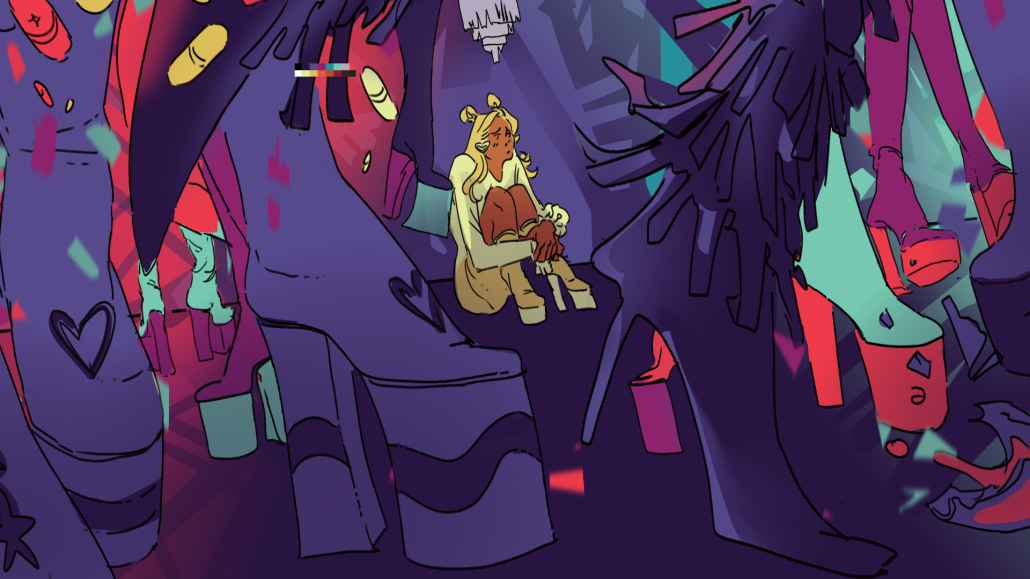Is moshing a partygoing activity to die for?

If you’ve ever felt the need to write a thirst tweet similar to “Shawn Mendes can stomp on my body,” just know that it’s not as fun as it sounds — as much as we’d all like to get lost in his Japan. From attending Conquest and Springfest, there’s a phenomenon that has recently (violently) pushed its way into my life: moshing.
So, what is moshing? I’ve been stepped on a few times recently — none of the occasions consensual, unfortunately — but moshing isn’t just about the death sentence or falling in the middle of a concert.
“In my experience, [moshing] is a bunch of people colliding with each other,” said Landon White, a sophomore majoring in intelligence and cyber operations who often partakes in moshing. “It could just be jumping up and down, or pushing each other. Or, it could be literally beating each other.”
Out of our very own Orange County, moshing originated in the late ’70s. Taking from styles of dancing such as pogoing, jumping up and down with your arms against the sides, the expression is said to have been coined by East Coast punk rockers Bad Brains. In their song “Leaving Babylon,” the word “mash” was misheard due to the singer’s Jamaican accent, prompting crowds to understand the phrase as “mosh.”
At USC, it’s hard to find an event where some students aren’t taking advantage of the opportunity to slam their body parts into disinclined individuals. The practice, while common, can create an atmosphere that has led to numerous injuries and creates unwelcoming settings for those with less mobility. In 2017, Springfest was canceled during Migos’ set due to overcrowding. At the 2019 Welcome Back Concert, Samuel Sommerer, a senior majoring in computer science, found himself between a rock and a hard… body?
“The concert was going fine until the point Westside Boogie got on stage. I was standing in the middle [of the crowd] with a couple of my friends, and at one point he said, ‘Oh, if you don’t want to get hurt, get out of the crowd now.’ I was an idiot and I didn’t get out of the crowd. And then he split the crowd like Moses, you know how he split the Red Sea, right? He directed everyone to go into two halves, and then when the beat dropped, he told everyone to crash together and everyone ran into each other,” said Sommerer.
Boogie’s irresponsibility as a performer had a direct effect on the safety of the students who were at the event. “Obviously a lot of people started falling down on each other. I heard people screaming. There’s a girl crying next to me. Three to five people fell on top of my left leg, and I thought it was going to snap for a second,” Sommerer said. “So, I started keeping my arms out to maintain a distance around me … and I had a preexisting injury, and someone bumped into my arm the wrong way and my arm dislocated.”
Even before events such as the Warped Tour rock festival banned moshing in 2014, there has been a history of prevention tactics that have been used to discourage rowdy rockers. One of these tactics is to set expectations with the performers themselves, a method used by the USC Concerts Committee.
“USC will go so far as to not okay performers on campus who would encourage moshing,” said Alexis Farahi, the committee’s risk management director of the committee. “We have even had instances where they’ve tried to do the thing where they say, ‘I know that you usually encourage moshing, but if you incite that, then we’re gonna have to cut off your show.’”
However, let’s not make any quick judgments on this form of expression; jumping to conclusions isn’t nearly as fun as jumping on top of each other. White argues catharsis as a major appeal of moshing.
“Mosh pits started with metal and hard rock culture and live performances of that music, which oftentimes deals with bouts of anger and isolation, stuff like that. It’s the opposite of isolation. It’s a bringing together of people in a literal sense,” he said.
Maybe there’s something very human about only necessitating a cluster of bodies to indulge in a bit of joyful ruckus.
In the vast, diverse network of mosh-enjoyers, there are rules that are followed to ensure maximum pleasure from all parties. Here are three Au-fficial rules to surviving the frights and fights of nightlife:
Rule #1
If you’re at a close-contact party, it may be wise to keep your hype closer to a pogo-style. Acting as a human torpedo isn’t attractive when you’re trying to get some. Torpedoing is for after you’ve wowed your crush, not the method.
Rule #2
When someone falls near you at the club, it doesn’t mean they are automatically part of the dancefloor. Trampling is only hot when it’s consensual.
Rule #3
Treat others the way you’d like to be treated! Before you decide to channel your inner wildebeest and attack your fellow crowd mates, consider the Golden Rule.
Moshing, an integral part of modern nightlife, doesn’t have to be dangerous. For everyone who is involved to be able to experience the euphoric feelings of a communal rapture, it’s crucial to follow these rules. And the next time you’re at a USC-sanctioned event, consider all these things before jumping in and jumping on the opportunity.

